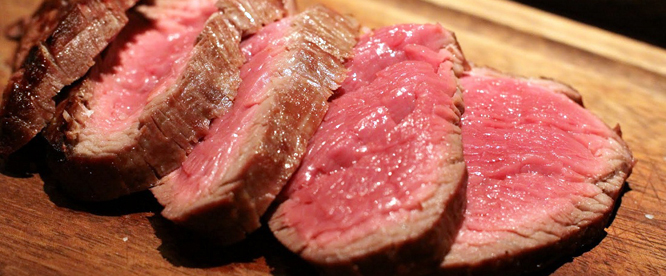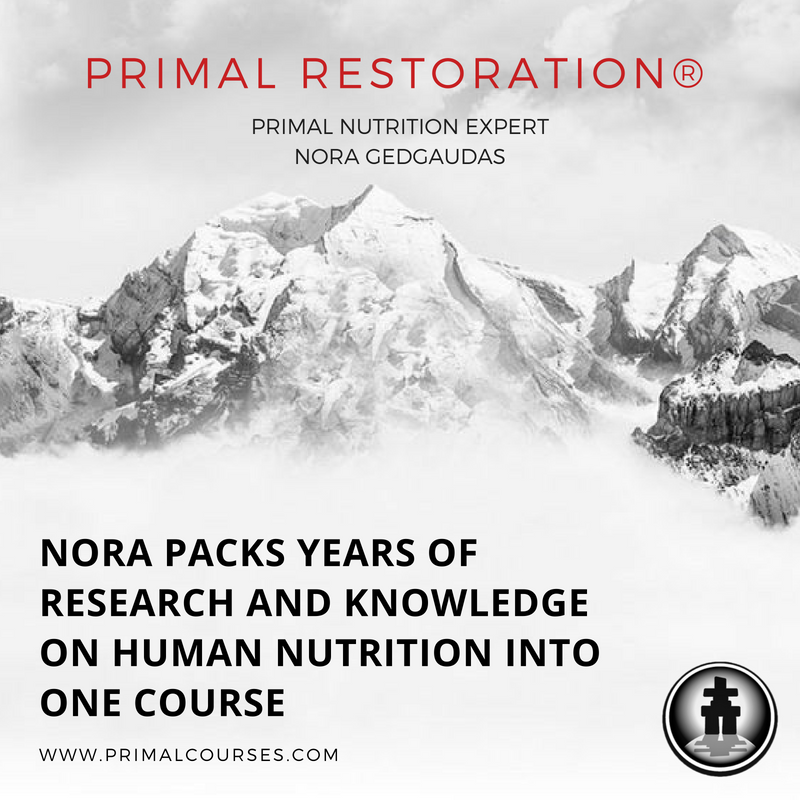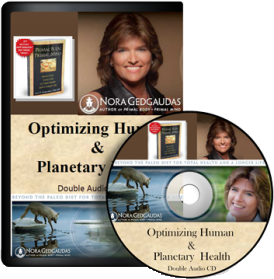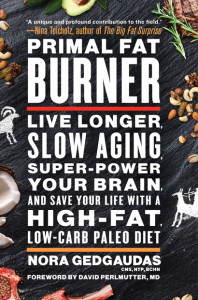
Image source: http://screwyouacne.com/2014/09/30/red-meat-cause-acne/
The World Health Organization (WHO) just announced that red meat is “probably carcinogenic to humans.”
Yep–Right up there with glyphosate, cigarettes, alcohol and asbestos.
——–> insert facepalm <——–
This announcement is absurdly misguided and largely based upon the notoriously two least reliable forms of science we have:
1) Observational studies driven by…
2) Food questionnaires
(By the way, what did YOU have for lunch on Thursday of last week/month year?)
This is all fully based on the idea of “guilt by weak association” and any rational person knows that association is NOT causation.
UGH–Back to the nutritional Dark Ages we go…
The WHO seems to be mostly citing evidence from research based on observational studies and food questionnaires published in the Archives of Internal Medicine in 2012, which included an analysis of “two prospective cohort studies.”[1] Similar in its failures to the ill-conceived and embarrassingly poor 2011 World Cancer Research Fund “Meta-analysis”[2]—also entirely based upon observational studies and questionnaires— ZERO distinction was made between feedlot meat and 100% grass-fed meat (a potentially huge distinction), and no real effort was made to distinguish the effect of the red meat from whatever else people happened to be eating. What did they include as “red meat?” McDonald’s hamburgers, pizza, hot dogs, tacos, bologna, nitrate-laced bacon and feedlot meat (GMO-fed and God knows what else). Although they did graciously concede that red meat is “only slightly less hazardous than preserved meats.” And red meat consumption was not separated in any way from whatever else anyone was eating or doing to their health (alcohol intake, sugar consumption, grains, etc. or other lifestyle factors). And since 97% of all meat production is commercial feedlot-based, grass-fed meat likely didn’t even factor into these results at all.
Suspiciously, too, the Archives of Internal Medicine study used what is called relative risk to show their results. “Relative risk” is frequently used to make things look far worse than they are—rather than what is called absolute risk, which really tells it like it is (but might make your results look less dramatic and, well, boring and meaningless).
It is a significant fact that cancer has been consistently reported to be extremely rare to even non-existent in red meat-eating, hunter-gatherer societies.[3],[4] What in particular has characterized the difference between even Neolithic hunter-gatherer diets and the modern-day Western diet causing us so much trouble now? Data from 229 hunter-gatherer societies included in the Revised Ethnographic Atlas indicate that hunter-gatherer diets differ from typical Western ones in basically two aspects: first, a strong reliance on animal foods (45-65% of energy or E%) and second, the consumption of low-GI [glycemic index] plant foods such as fibrous vegetables, some fruits, nuts and seeds.[5] But we also need to take the quality of the foods they had available to them into account and the very, very different nutrient/fatty acid profile between feedlot meat and 100% naturally grass-fed meat/wild game. Grain fed meats are predominated by potentially inflammatory omega-6 content (while being nearly devoid of healthy omega-3’s), versus 100% grass-fed and finished meat (and wild game) which supplies a high percentage of highly anti-inflammatory omega-3 fatty acids (EPA/DHA). Omega-3’s have additionally shown some significant anti-cancer benefits.[6] [7] [8]
Quality counts for a LOT and we all need to start taking that seriously. Deadly seriously.
In spite of the WHO declaration, other research has shown no meaningful link between diets higher in dietary animal fat and increased cancer risk.[9],[10] With respect to colon cancer, alone, there are many, many more (and better designed) studies finding little to no significant association with red meat and cancer than those that do, some even showing an actual lowered risk![11] [12] [13] [14] [15] [16] [17] [18] [19] [20] [21] [22] [23] [24] [25]
With respect to eating meat—my Primalgenic® approach bases its meat consumption overall on two very distinct recommendations:
- Red meat should only come from 100% pasture fed and finished animals. NO feedlot and/or commercial processed meat!
- I recommend meat/protein in general to be consumed in strict moderation—no more than about 0.8 gram per kg of estimated ideal body weight (i.e., approximating the weight of your lean tissue mass)
Excessive protein from any source is potentially bad by virtue of 1) its up-regulation of proliferative mTOR pathways 2) its increase of IGF-1, which increases non-specific cellular proliferation and 3) the excess presence of glutamine and 4) protein in excess of what we need in order to meet our basic requirements is readily (up to 40% or so) converted to sugar and used the same way. –And SUGAR (not red meat) is cancer’s #1 most essential metabolic fuel.
With respect to the benefits of exclusively grass-fed meat (over feedlot meat), a particular form of fat that has been more recently lauded for its anti-cancer benefits is one exclusively found in the fat of animals fed on nothing but natural pasture.[26] [27] [28] [29] [30] In fact, CLA may be one of the most broadly beneficial and potent cancer-fighting substances in our diet. It is somewhat uniquely able to (in very small amounts) block all three stages of cancer: 1) initiation 2) growth/promotion and 3) metastasis. Most “anticancer nutrients” are typically helpful in only one of these areas. To date, beneficial effects of natural CLA from animal fat have been found in cancers of the breast, prostate, colon and skin. In animal studies, as little as one half of one percent CLA in the diet of experimental animals reduced tumor burden by more than 50 percent.[31] As if this wasn’t exciting enough, there is more direct evidence that CLA may reduce cancer risk in humans. In a Finnish study, women who had the highest levels of CLA in their diet had a 60 percent lower risk of breast cancer than those having the lowest levels. Switching from grain-fed to exclusively grass-fed meat literally places women in this lowest risk category!
Additionally, French researchers measured CLA levels in the breast tissues of 360 women and found that the women with the most CLA had the lowest risk of cancer. In fact, the women with the most CLA had a staggering 74% lower risk of breast cancer than the women with the least CLA. [32] In yet another study, human breast cancer cells were incubated in milk fat high in CLA or in an isolated form of CLA without any milk fat. The high CLA milk fat decreased cancer growth by 90 percent but the isolated CLA decreased it by only 60 percent. When the cells were incubated in the omega-6 fat, linoleic acid, found most abundantly in grain and grain-fed animals, cancer cell growth increased by 25 percent![33] Other women with the most CLA in their diets were also shown to have a 60% reduction overall in the incidence of breast cancer.[34]
Other studies have additionally shown breast cancer and even colon cancer preventative benefits.[35] [36] [37] [38] In keeping with this, CLA additionally exerts potent anti-inflammatory effects.[39] The inherent stability of CLA also seems to maintain itself even when meat is cooked.[40],[41] One study pointed out the following, “Of the vast number of naturally occurring substances that have been demonstrated to have anticarcinogenic activity in experimental models, all but a handful of them are of plant origin. Conjugated linoleic acid is unique because it is present in food from animal sources, and its anticancer efficacy is expressed at concentrations close to human consumption levels.”[42] CLA is highly abundant, too, in wild game. The implication here is that naturally occurring CLA in animal fat has always played an important role in our diets and may possibly even be a contributing factor to the near-zero incidence of cancer found in hunter-gatherer populations.[43] For all you Aussies out there, one study reported unusually high levels of CLA in (of all things) kangaroo meat![44]
ONLY CLA from the fat of wild game and fully pastured animals has the real anticancer health benefits you want.[45] Even though synthetic CLA is sold in capsules in health food stores, it lacks the beneficial form found exclusively in grass-fed meats and may even have potentially adverse effects. But I digress…
According to a research collaboration between Clemson University and the USDA in 2009, in addition to cancer-fighting CLA, fully pastured meat contains the following additional, potentially anti-cancer benefits[46]:
- Higher in beta-carotene
- Higher in vitamin E (alpha-tocopherol)
- Higher in the B-vitamins thiamin and riboflavin and B12
- Higher in the minerals calcium, magnesium, and potassium
- Higher in total omega-3’s[47] [48] [49]
- A healthier ratio of (inflammatory) omega-6 to anti-inflammatory omega-3 fatty acids (1.65 vs. 4.84)
- Higher in trans-vaccenic acid (TVA–which can be transformed into CLA)
Also, lamb/sheep fed exclusively on pasture vs. grain contains twice as much lutein (closely related to beta-carotene but more easily absorbed), which has shown possible preventative benefits with respect to both colon and breast cancer (while additionally reducing the risk of macular degeneration).[50]
So…in a nutshell, this WHO declaration will not change the recommendations I have been making all along. 100% grass-fed and finished meat (not just red meat, by the way) consumed in moderate amounts along with quality, organic fibrous plant-based foods has been and will continue to be among my foundational recommendations for optimal health.
~ Nora Gedgaudas, CNS, CNT, BCHN
“Red meat is NOT bad for you. Now blue-green meat, THAT’S bad for you!” —Tommy Smothers
Citations:
[1] Pan A, Sun Q, Bernstein A, et al. “Red Meat Consumption and Mortality: Results from two prospective cohort studies.” Arch Intern Med. 2012;172(7):555-563. doi:10.1001
[2] http://www.wcrf.org/sites/default/files/Colorectal-Cancer-2011-Report.pdf
[3] Brown GM, Cronk LB, Boag TJ:“The occurrence of cancer in an Eskimo.” Cancer.1952,5:142-143.
[4] Levine I: “Cancer among the American Indians and its bearing upon the ethnologicaI distribution of the disease.” J Cancer Res Clin Oncol 1910, 9:422-435
[5] Cordain L, Miller JB, Eaton SB, Mann N: “Macronutrient estimations in
hunter-gatherer diets.” Am J Clin Nutr 2000,72:1589-1592
[6] Rose, DP, Connolly JM, et al. “Influence of Diets Containing Eicosapentaenoic or Docasahexaenoic Acid on Growth and Metastasis of Breast Cancer Cells in Nude Mice.” Journal of the National Cancer Institute 1995. 87(8): 587-92.
[7] Tisdale, MJ. “Wasting in cancer.” J Nutr 1999. 129(1S Suppl): 243S-246S.
[8] Tashiro T, Yamamori H, et al. “n-3 versus n-6 polyunsaturated fatty acids in critical illness.” Nutrition 1998. 14(6): 551-3.
[9] Enig, M.G., R.J. Munn, and M. Keeney, “Dietary fat and cancer trends–a critique”. Fed Proc. 37:2215, (1978).
[10] Enstrom, J.E. “Colorectal Cancer and Consumption of Beef and Fat.” Br. J Cancer, 32:432, (1975).
[11] Thun MJ, Calle EE, Nambodiri MM, et al. Risk factors for fatal colon cancer in a large prospective study. J Natl Cancer Inst 1992;84:1491–500.
[12] Hirayama T. “Lifestyle and mortality: a large-scale census-based study in Japan.” Basel, Switzerland: Karger, 1990.
[13] Heilbrun LK, Normura A, Hankin JH, Stemmerman GN. “Diet and colorectal cancer with special reference to fiber intake.” Int J Cancer 1989;44:1–9.
[14] Goldbohm RA, van den Brandt PA, van’t Veer P, et al. “A prospective cohort study on the relation between meat consumption and the risk of colon cancer.” Cancer Res 1994;54:718–23.
[15] Knekt P, Steineck G, Järvinen R, Hakulinen T, Aromaa A. “Intake of fried meat and risk of cancer: a follow-up study in Finland.” Int J Cancer 1994;59:756–60.
[16] Gaard M, Tretli S, Loken EB. “Dietary factors and risk of colon cancer: a prospective study of 50,535 young Norwegian men and women.” Eur J Cancer Prev 1996;5:445–54.
[17] Hsing AW, McLaughlin JK, Chow WH, et al “Risk factors for colorectal cancer in a prospective study among US white men.” Int J Cancer.” 1998;77:549–54.
[18] Jansen MCJF, Bueno-de-Mesquita HB, Buzina R, et al “Dietary fiber and plant foods in relation to colorectal cancer mortality: the Seven Countries Study.” Int J Cancer 1999;81:174–9.
[19] Flood A, Velie EM, Sinha R, et al. “Meat, fat and their subtypes as risk factors for colorectal cancer in a prospective cohort of women.” Am J Epidemiol 2003;158:59–68.
[20] Kojima M, Wakai K, Tamakoshi K, et al. “Diet and colorectal cancer mortality: results from the Japan Collaborative Cohort Study.” Nutr Cancer 2004;50:23–32.
[21] Chao A, Thun MJ, Connell CJ, et al. “Meat consumption and risk of colorectal cancer.” JAMA 2005;293:172–82.
[22] Sato Y, Nakaya N, Kuriyama S, Nishino Y, Tsubono Y, Tsuji I. “Meat consumption and risk of colorectal cancer in Japan: the Miyagi Cohort Study.” Eur J Cancer Prev 2006;15:211–8.
[23] Key TJ, Fraser GE, Thorogood M, et al. “Mortality in vegetarians and non-vegetarians: a collaborative analysis of 8300 deaths among 76,000 men and women in five prospective studies.” Public Health Nutr 1998;1:33–41.
[24] Phillips RL, Snowdon DA. “Dietary relationships with fatal colorectal cancer among Seventh-Day Adventists.” J Natl Cancer Inst 1985;74:307–17.
[25] Wei EK, Giovanucci E, Wu K, et al. “Comparison of risk factors for colon and rectal cancer.” Int J Cancer 2004;108:433–42.
[26] Dhiman, T. R., G. R. Anand, et al. (1999). “Conjugated linoleic acid content of milk from cows fed different diets.” J Dairy Sci 82(10): 2146-56.
[27] Pariza MW, Hargraves WA. “A beef-derived mutagenesis modulator inhibits initiation of mouse epidermal tumors by 7,12-dimethylbenz[a]anthracene.” Carcinogenesis 1985;6:591–3.
[28] Ip, C., J. A. Scimeca, et al. (1994). “Conjugated linoleic acid. A powerful anticarcinogen from animal fat sources.” Cancer 74(3 Suppl): 1050-4.
[29] Białek A, Tokarz A. “[Conjugated linoleic acid as a potential protective factor in prevention of breast cancer].” Postepy Hig Med Dosw (Online). 2013 Jan 11;67:6-14.
[30] Heinze VM, Actis AB. “Dietary conjugated linoleic acid and long-chain n-3 fatty acids in mammary and prostate cancer protection: a review.” Int J Food Sci Nutr. 2012 Feb;63(1):66-78. doi: 10.3109/09637486.2011.598849. Epub 2011 Jul 15.
[31] Daley CA, Abbott A, Doyle P, et al. “A literature Review of the Value-Added Nutrients Found in Grass-Fed Beef Products.” Nutrition Journal, June 2006
[32] A. Aro et al, Kuopio University, Finland; Bougnoux, P, Lavillonniere F, Riboli E. “Inverse relation between CLA in adipose breast tissue and risk of breast cancer. A case-control study in France.” Inform 10;5:S43, 1999
[33] Donnelley C, Olsen AM, Lewis LD. “Conjugated Linoleic Acid (CLA) inhibits expression of the Spot 14 (THRSP) and fatty acid synthase genes and impairs the growth of human breast cancer and liposarcoma cells.” Nutr Cancer. 2009; 61(1): 114–122. doi: 10.1080/01635580802348666
[34] Aro, A., S. Mannisto, I. Salminen, M. L. Ovaskainen, V. Kataja, and M. Uusitupa. “Inverse Association between Dietary and Serum Conjugated Linoleic Acid and Risk of Breast Cancer in Postmenopausal Women.” s 38, no. 2 (2000): 151-7.)
[35] Ip C, Dong Y, Ip MM, et al. “Conjugated linoleic acid isomers and mammary cancer prevention.” Nutr Cancer 2002;43:52–8.
[36] Masso-Welch PA, Zangani D, Ip C, et al. “Inhibition of angiogenesis by the cancer chemopreventive agent conjugated linoleic acid.” Cancer Res 2002;62:4383–9.
[37] Kemp MQ, Jeffy BD, Romagnolo DF. “Conjugated linoleic acid inhibits cell proliferation through a p53-dependent mechanism: effects on the expression of G1-restriction points in breast and colon cancer cells.” J Nutr 2003;133:3670–7.
[38] Aro, A., S. Mannisto, I. Salminen, M. L. Ovaskainen, V. Kataja, and M. Uusitupa. “Inverse Association between Dietary and Serum Conjugated Linoleic Acid and Risk of Breast Cancer in Postmenopausal Women.” s 38, no. 2 (2000): 151-7.)
[39] Yu Y, Correll PH, Vanden Heuvel JP. “Conjugated linoleic acid decreasesproduction of pro-inflammatory products in macrophages: evidence for a PPARγ-dependent mechanism. Biochimica et Buiohysica Acta 2002. 1581:89-99.
[40] Ha YL, Grimm NK, Pariza MW. “Anticarcinogens from fried ground beef: heat altered derivatives of linoleic acid.” Carcinogenesis 1987;8:1881–7.
[41] Lin Yang, Ying Cao, Zhen-Yu Chen; Cao; Chen (2004). “Stability of conjugated linoleic acid isomers in egg yolk lipids during frying”. Food Chemistry (Elsevier) 86 (4): 531–535. doi:10.1016/j.foodchem.2003.09.006
[42] Ip, C., J. A. Scimeca, et al. (1994). “Conjugated linoleic acid. A powerful anticarcinogen from animal fat sources.” Cancer 74(3 Suppl): 1050-4.
[43] Cordain et al, “A Detailed Fatty Acid Analysis of Selected Tissues in Elk, Mule Deer, and Antelope.” Food Composition 670.1-670.6
[44] “Kangaroo meat – health secret revealed” (Press release). Commonwealth Scientific and Industrial Research Organisation (CSIRO). 2004-04-23.
[45] Information gleaned from abstracts presented at the 91st American Oil Chemists Society April 25-28, 2000 annual meeting. Special supplement to Inform, vol 11, no 5, 2000
[46] Duckett SK, Neel JPS, Fontenot JP and Clapham WM. “Effects of winter stocker growth rate and finishing systems on: III. Tissue proximate, fatty acid, vitamin, and cholesterol content.” Journal of Animal Science 2009. 87: 9:2961-2970. Doi: 110.2527/jas.2009-1850
[47] Rose, D. P., J. M. Connolly, et al. (1995). “Influence of Diets Containing Eicosapentaenoic or Docasahexaenoic Acid on Growth and Metastasis of Breast Cancer Cells in Nude Mice.” Journal of the National Cancer Institute 87(8): 587-92.
[48] Tisdale, M. J. (1999). “Wasting in cancer.” J Nutr 129(1S Suppl): 243S-246S.
[49] Tashiro, T., H. Yamamori, et al. (1998). “n-3 versus n-6 polyunsaturated fatty acids in critical illness.” Nutrition 14(6): 551-3.
[50] Kruggel, W.G., “Influence of sex and diet on lutein in lamb fat.” J of Animal Science 54: 970-975, 1982.




You fail to include the way it’s cooked factor.
http://www.lifeextension.com/magazine/2015/8/live-longer-by-changing-how-you-cook/page-01
You fail to include: Excess dietary protein can lead to elevated blood sugar, weight gain, kidney stress, leaching of bone minerals, and stimulating cancer cells.
http://articles.mercola.com/sites/articles/archive/2014/09/03/too-much-protein.aspx
Excellent – putting this debate into proper perspective. Thankfully, in New Zealand, most of our meat is grass-fed. Cheers Rodney Ford
I think Dusty failed to read the article in full. Nora does address cancer and the positive effects of pasture-raised meat and that the key culprit feeding cancer is sugar, meat has a much lower impact. And she never condones eating meat in large or excessive amounts, limit portions and have pasture-raised meat is key.
Have been a big fan of your work Nora, this blog post was just as great. Thanks for all the amazing information and studies!